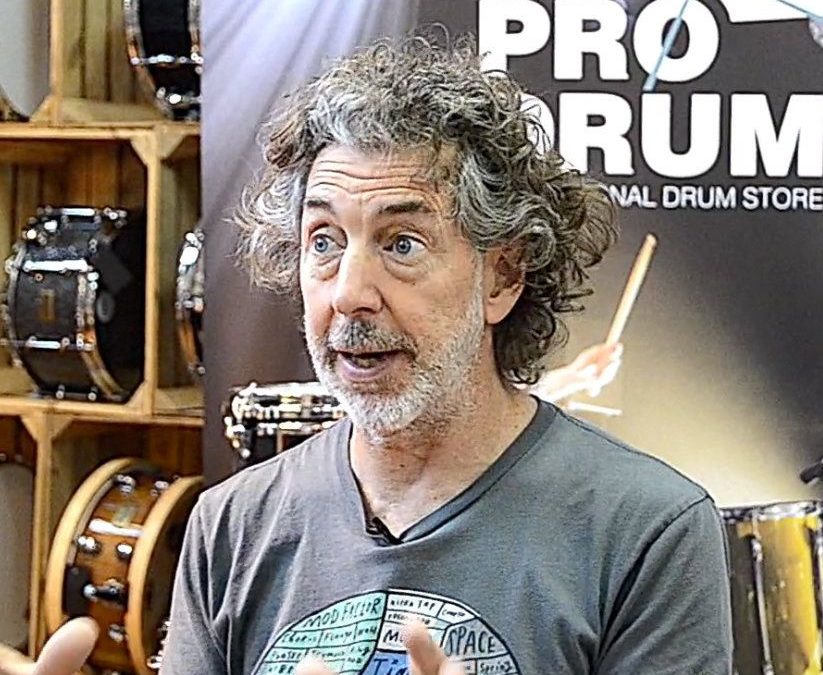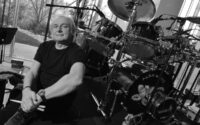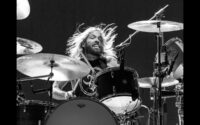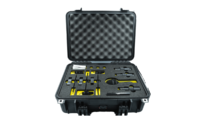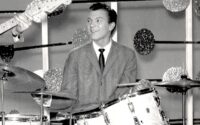Simon Phillips is one of the most prolific drummers of his generation, a true institution in the world of modern drums. The list of artists he has collaborated with would take the entire space we have for this article. Just a few of them, e. g.: Mike Oldfield, The Who, Judas Priest, Jeff Beck, Tears For Fears, Gary Moore, Jack Bruce, David Gilmour, Brian Eno, Joe Satriani, Jon Anderson, Stanley Clarke, is enough to want to know what a player like that has to say and play. There have been a lot more of those sessions, let alone replacing the late Jeff Porcaro as a permanent member of TOTO for 21 years.
You have already been able to enjoy the wonderful drum solo Simon Phillips played during his clinic at the Hard Rock Cafe in Warsaw, Poland, on June 11, 2017, which was organized by the Warsaw-based Pro Drum store. Now, it is time for an in-depth interview exclusively for the viewers of en.beatit.tv.
Simon Phillips talks to BeatIt, Pt. 3
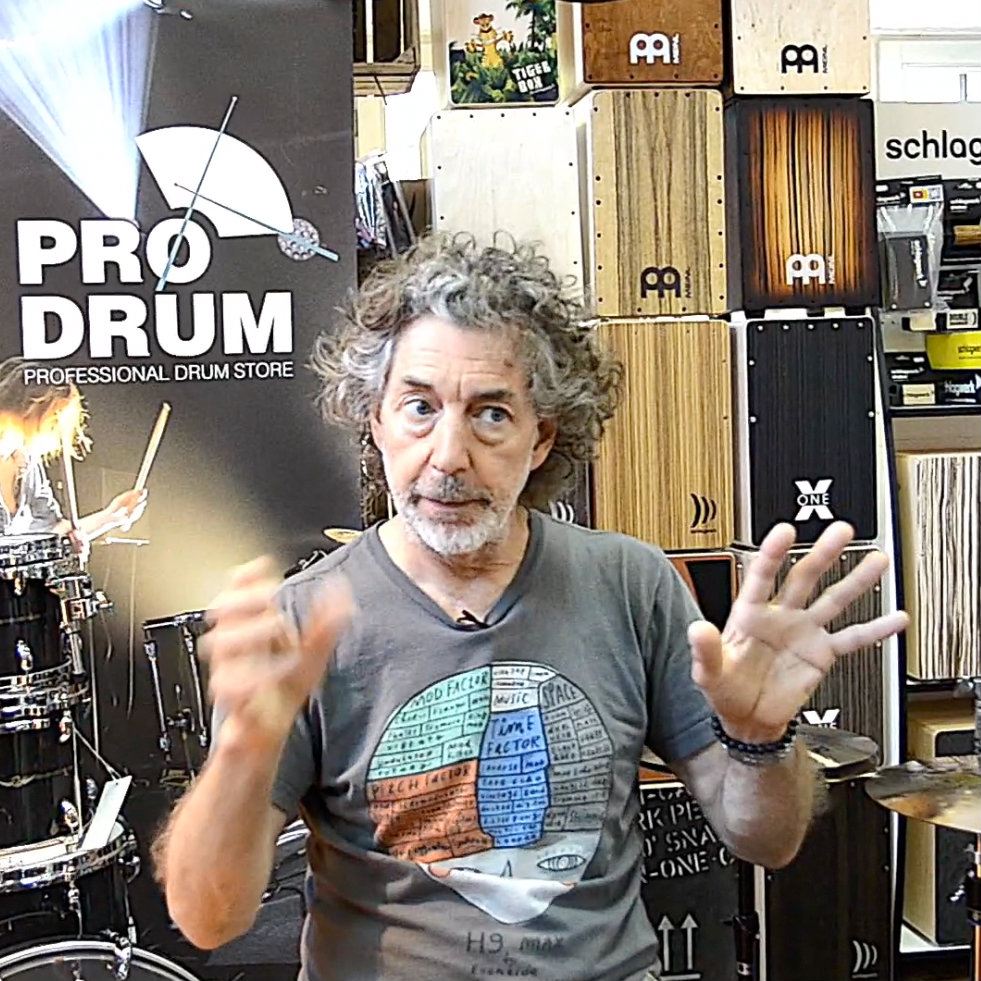
“I record in every way possible. Whatever fits the bill. If it’s a complex arrangement, I do it in sections because we don’t have the time to sit down, rehearse and learn something that’s really complex. That would take a couple of days of rehearsal. That’s not what we do. I might get an overall take, just to get the story as it were. Then I might go: ‘Let’s do this section and this section’ because they’re basically the same‘. The session I just did in Real World actually wasn’t songs. It was segments of a very long piece. That’s what we had to do. We would do it with run-down and it was complicated. So I’d say: ‘Let’s go from there to letter B. Let’s get that sorted out, let’s figure out what we’re playing. Then, let’s punch in here, we’ll do that next section’. When we got down three pages down the chart, suddenly, letter A was being played again. And I couldn’t remember what the hell I’d played. So I said: ‘Play me letter A’. We put all the markers in on Pro Tools, ‘cause it was to grid and with a click. He just went straight to A, I listened and went: ‘Oh, yeah! Great! Punch me in!’. There’s nothing wrong with that, of course not. If you’ve got a tight budget and studio time is what it is, you just need to get it done and get it right, with a great sound. I’ve done pretty much every way of recording a track you can imagine. Whatever works and makes the final thing sound good is fine.
I use the same kit [for every session]. The only thing I’ll change is the type of snare drum to suit the track. It’s about character, it’s about fitting in. Does this sound suit what we’re playing? Maybe not. Sometimes, when I hear the track with a starting drum sound and I’ll go: ‘I’m gonna change the snare, this is not gonna work for this one’. I’ll get something else that has either more spread or is a bit drier, or it’s higher pitched or lower pitched. Even just by changing the snare, without touching anything else, the way I play is gonna change the overall sound of those drums. The other thing is the balance of the kit. How much overheads to put in the mix? What are the ambience doing? I always use some sort of treatment on the ambience, depending on the room. If it’s a smaller room, I’ll use an SPL Transient Designer. I can actually shape the attack and sustain on it to be either longer or shorter to go with the tempo of the song. If the engineer I’m working with has got it, he’ll adapt to my playing. If I’m engineering, I’ll come in and change a couple of things. Maybe a little EQ on the snare. I’ll change the balance a little bit – less overheads and ambience, a bit more direct. That really changes the whole kit sound and, especially, how I’m playing. I may only have to change the snare. If I want a special cymbal, I’ll go: ‘OK, let me pop this up’. But generally, it’s very, very rare. The only thing I change is an extra ride or swish, just for fun. Nine times out of ten, I don’t change anything. I just change the way I play.
I have all my original snare drums. I’ve kept my first proper snare drum, which is a 1973 Ludwig 400. I got it second hand because in England we couldn’t afford new drums. Especially Ludwig from America. So expensive! I still have that one. I bought a 1974 Ludwig 402 and I still have that. It was on a lot of records. I have a Rogers, which was probably made in 1975. I bought it in 1976. It’s a 6.5” Dynasonic. My next snare drum was a 1949 Slingerland Radio King, which I bought in New York in 1977. In 1979, I bought a 1939 Leedy shell from Paul Jameson in Los Angeles. ‘79 was when I started using Tama, so I kind of stopped collecting vintage drums ‘cause Tama were starting to make some really good stuff and I have a bunch of different Tama stuff. Plus, we have the signature series and I have a lot of prototypes. When we were searching for the first signature drum, I had to make all these different prototypes, just to see what they were like. I still have those. Some are good, some are not good. In recent years, I’ve bought a couple of Ludwigs. I bought a 1959 400 brass shell, which is beautiful, and an Acrolite. It’s still one of my favourite drums. So yeah, I go for those. But the problem with vintage stuff in reality is you’ve got a 5-minute track, you’ve got this snare sound and five minutes later that snare drum has changed. The snares are loose, the head’s gone down, even with locking nuts and everything. Especially nowadays, we record digitally. You can hear that stuff a lot clearer. With tape, you didn’t hear it so much.”
Simon Phillips is endorsed by Tama, Zildjian, Remo and Pro-Mark.
Drummers and Drummerettes! We give you Simon Phillips in the third installment of an exclusive interview, especially for the viewers of en.beatit.tv! Enjoy!
Share

